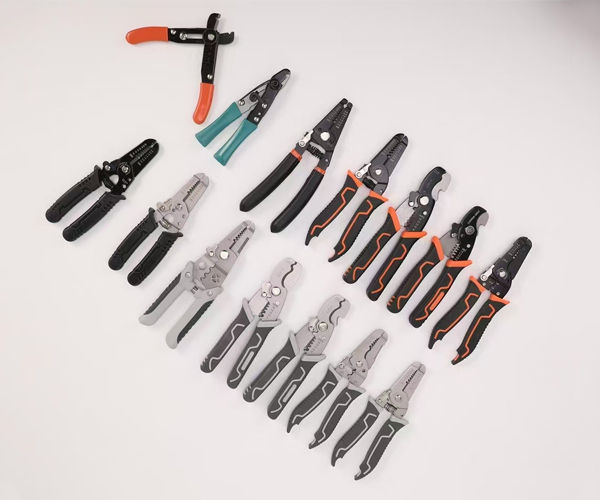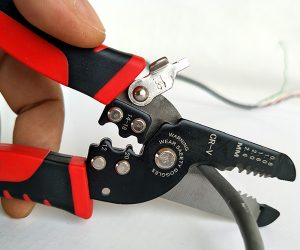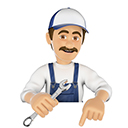A wire stripper is an essential tool for anyone who works with electrical wiring. If you’re in construction, electronics, or automotive fields, you probably already know the importance of having the right tools for the job. But here’s the kicker: many wire strippers come with small holes in the body of the tool, and if you’ve ever wondered what those holes are for, you’re not alone! In this article, we’ll delve into what the holes on a wire stripper are used for, why they are there, and how they can make your wire stripping experience even more efficient. So, let’s break it down.
1. What Are the Holes on a Wire Stripper Used For?
You’ve probably noticed them before—the small, circular holes on the body of your wire stripper. But what do they actually do? Let’s explore the purpose of these often-overlooked features. The holes on a wire stripper are designed for a variety of functions. They might seem simple, but they pack a lot of utility. Ready for the good part? These holes can serve multiple purposes, from cutting to gauging wire thickness.
One of the most common uses for the holes is to help with wire cutting and crimping. Many models feature these holes as a secondary function, enabling the user to cut the wire to a specific length with ease. For instance, some wire strippers use the hole to strip insulation from wires of a certain gauge. In this case, you simply place the wire in the correct hole, and the tool does the rest.
Here’s the thing: wire strippers with multiple hole sizes can help you with different wire gauges. What’s the real story? Without these holes, stripping wires would be a lot more tedious, especially when dealing with small or specific wire gauges. The ability to quickly and accurately strip insulation can save time, especially on larger projects.
Table: Common Hole Sizes on Wire Strippers
| Hole Size (AWG) | Function | Typical Use |
|---|---|---|
| 10-12 AWG | Stripping and Cutting | Heavy-duty wires (e.g., speaker wires) |
| 14-16 AWG | Stripping and Crimping | Standard household electrical wiring |
| 18-20 AWG | Precision Stripping | Small wires used in electronics |
| 22-26 AWG | Fine Stripping | Thin wires in low-voltage circuits |
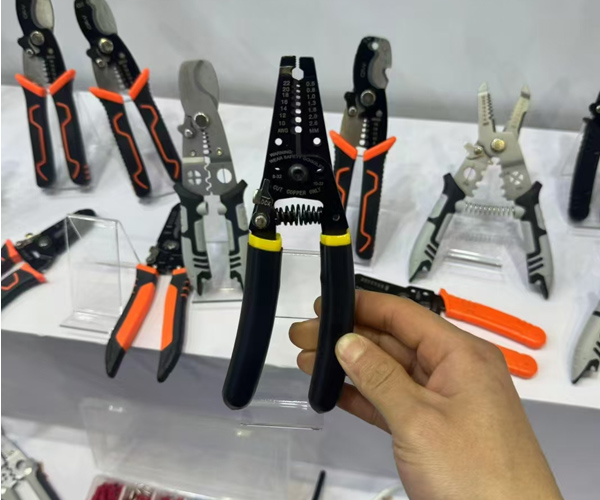
2. Why Are Different Hole Sizes Important?
The different hole sizes on a wire stripper are crucial for ensuring that the tool can accommodate various wire gauges. Here’s where it gets interesting. If you’re working with a wire gauge that’s too large or too small for the hole, you could end up damaging the wire or making your task much harder than it needs to be. So, having the right size hole for the wire gauge is an essential feature.
Let’s say you’re working on a home electrical project and need to strip 18 AWG wires. If your wire stripper doesn’t have an appropriately sized hole, you could end up either stripping too much or too little insulation. This could lead to a poor connection or even electrical failure.
But here’s the kicker: The holes also help improve the efficiency of the wire stripping process by providing precision and control. You’re not left guessing or eyeballing it; you can be certain that the wire is placed in the correct hole to get the desired result.
Table: Importance of Hole Sizes for Different Wire Types
| Wire Gauge | Hole Size Required | Resulting Action |
|---|---|---|
| 10-12 AWG | Large Hole | Perfectly strips thick wires |
| 14-16 AWG | Medium Hole | Suitable for general electrical tasks |
| 18-20 AWG | Small Hole | Strips thinner wires with accuracy |
| 22-26 AWG | Very Small Hole | Precision stripping for small projects |
3. How to Properly Use a Wire Stripper with Holes
Using a wire stripper properly is crucial for safe and effective stripping. You might be wondering, what’s the best way to use a wire stripper with multiple holes? The first step is to identify the correct hole size for the wire you’re working with. This is important because using the wrong hole size can damage the wire, making it less effective for its intended purpose.
This is where it gets interesting… Once you’ve chosen the right hole, you simply insert the wire and squeeze the handles of the stripper. The tool’s design ensures that the insulation is stripped cleanly without damaging the wire itself. Be sure to avoid applying too much pressure, as this could cause the wire itself to break or become distorted.
Additionally, some wire strippers have a specific method for cutting the wire to size using the holes. By placing the wire in the right hole, you can cut it precisely without any additional tools.
Table: Tips for Using Wire Strippers Effectively
| Tip | Description |
|---|---|
| Correct Hole Selection | Always match the wire gauge to the hole size |
| Apply Steady Pressure | Avoid squeezing too hard to prevent wire damage |
| Use for Cutting and Crimping | Some wire strippers double as cutters or crimpers |
4. What Are the Advantages of Using a Wire Stripper with Holes?
Using a wire stripper with multiple holes offers significant advantages. So, why does it matter? These tools provide greater precision and versatility. Whether you’re stripping wire for a home project or working on large electrical installations, having the right tool makes a world of difference.
Here’s the kicker: Multi-functional wire strippers save time and effort. You no longer need a separate tool for cutting or crimping. Everything you need is right there in one device, making your work more streamlined and efficient.
Furthermore, the versatility of wire strippers with various hole sizes means you can handle a wide range of wire gauges. Whether you’re working with thin wires for small electronics or heavy-duty cables for industrial equipment, this tool can accommodate both, ensuring you always have the right tool for the job.
Table: Key Advantages of Multi-Hole Wire Strippers
| Advantage | Benefit |
|---|---|
| Versatility | Works with various wire gauges |
| Multi-functionality | Combines stripping, cutting, and crimping |
| Time-saving | Reduces the need for multiple tools |
5. How Can You Maintain a Wire Stripper with Holes?
Maintaining your wire stripper is essential for keeping it in top condition. What’s the real story here? Proper maintenance will extend the life of your wire stripper and ensure it continues to perform at its best. This is especially true for models with multiple holes. Regular cleaning and occasional sharpening of the blades will prevent them from becoming dull and ineffective.
Ready for the good part? To maintain your wire stripper, make sure to clean it after each use. Dirt and debris can accumulate around the holes, which can affect its ability to perform accurately. You should also inspect the blades periodically for wear and tear. Sharpening or replacing the blades when necessary will keep the tool functioning properly for years to come.
Finally, ensure that the wire stripper is stored in a dry, safe place. Avoid leaving it in high-humidity areas, as moisture can lead to rust or corrosion, which will compromise the tool’s functionality.
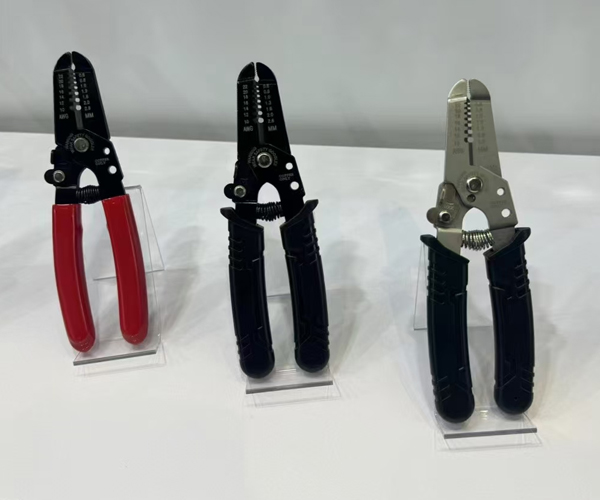
Table: Maintenance Checklist for Wire Strippers
| Task | Frequency | Description |
|---|---|---|
| Clean After Use | Every time | Wipe off dirt, grease, and wire shavings |
| Inspect Blades | Monthly | Check for wear, replace if necessary |
| Store in Dry Location | Always | Prevent rust and corrosion from moisture |
Conclusion
In conclusion, the holes on your wire stripper are not just there for decoration—they serve a functional purpose that can improve your wire stripping experience. By using the right hole size for the correct wire gauge, you can ensure a clean, safe, and effective stripping process. Plus, the added versatility of wire strippers with multiple hole sizes means that you’re equipped to handle a variety of tasks with ease. Remember to maintain your wire stripper well, and it will continue to serve you for years. So, next time you pick up your wire stripper, think about those small holes—they’re not just there for looks.
FAQ Section
Q1: What is a wire stripper?
A wire stripper is a tool used to remove the insulation from electrical wires, leaving the exposed copper or metal for electrical connections.
Q2: How does a wire stripper work?
A wire stripper works by using sharp blades to cut through the insulation of a wire while leaving the wire intact.
Q3: Why are there holes on a wire stripper?
The holes on a wire stripper help with cutting, crimping, and stripping wires of various gauges, allowing for more precision and efficiency.
Q4: How do I maintain a wire stripper with holes?
Regular cleaning, blade inspection, and proper storage in a dry location are key to maintaining your wire stripper.
Q5: Can a wire stripper be used for other purposes?
Yes, wire strippers can also be used for cutting wires to specific lengths and crimping terminals, making them versatile tools for various tasks.
Looking for high-quality wire strippers for your business? As a leading manufacturer and supplier, we offer a wide range of wire strippers designed to meet your needs. Get in touch with us today to discuss custom solutions, bulk orders, and pricing. Contact us now for more information and to receive your free quote!

